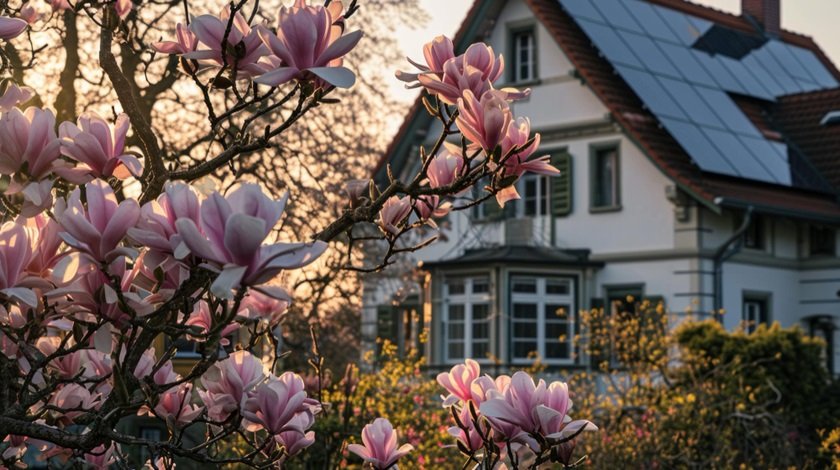Magnolia trees are renowned for their stunning flowers, lush foliage, and elegant presence, making them a favorite choice for many garden enthusiasts. However, with a vast array of magnolia species and varieties available, selecting the perfect one for your landscape can be a delightful yet daunting task. This guide will help you navigate the diverse world of magnolias, providing insights into the characteristics and growing requirements of different types, ensuring you find the ideal magnolia to complement and enhance your garden’s beauty.
How to Choose the Right Magnolia for Your Landscape
Choosing the right magnolia for your landscape involves considering several key factors to ensure the tree thrives and enhances the beauty of your garden. Here are some essential aspects to keep in mind:
1. Climate Compatibility
Magnolias come in various species, each adapted to specific climates. It’s crucial to choose a variety that will thrive in your local climate.
- Southern Magnolia (Magnolia grandiflora): Ideal for warm, humid regions like the southeastern United States.
- Star Magnolia (Magnolia stellata): Suited for cooler climates and can tolerate colder winters.
- Sweetbay Magnolia (Magnolia virginiana): Versatile and can grow in both wet and dry conditions, suitable for a range of climates.
2. Space and Size
Consider the available space in your garden and the mature size of the magnolia variety.
- Large Trees: Southern Magnolia can grow up to 80 feet tall, making it suitable for large landscapes.
- Medium Trees: Saucer Magnolia (Magnolia x soulangeana) typically grows 20-30 feet tall, fitting well in medium-sized gardens.
- Small Trees: Star Magnolia and Jane Magnolia (Magnolia ‘Jane’) are perfect for smaller spaces, reaching around 10-15 feet tall.
3. Soil Requirements
Magnolias generally prefer well-drained, slightly acidic soil. However, some species can adapt to different soil types.
- Acidic Soil: Most magnolias thrive in slightly acidic conditions. Conduct a soil test and amend the soil if necessary.
- Moist Soil: Sweetbay Magnolia can tolerate wetter conditions, making it a good choice for areas with poor drainage.
4. Sunlight Needs
Magnolias have varying sunlight requirements, from full sun to partial shade.
- Full Sun: Southern Magnolia and Saucer Magnolia thrive best in full sun, promoting vigorous growth and abundant blooms.
- Partial Shade: Star Magnolia and Sweetbay Magnolia can tolerate partial shade, making them suitable for gardens with some tree cover.
5. Flowering Time and Color
Consider the bloom time and flower color to ensure it complements your garden’s design and seasonal interest.
- Early Bloomers: Star Magnolia blooms early in spring, often before the leaves appear, creating a striking visual impact.
- Late Bloomers: Jane Magnolia blooms in late spring to early summer, providing color later in the season.
- Flower Colors: Magnolia flowers come in various shades, including white, pink, purple, and yellow. Choose a color that complements your garden’s palette.
6. Maintenance and Care
Different magnolia varieties have varying maintenance requirements. Choose a variety that fits your gardening style and available time for care.
- Low Maintenance: Southern Magnolia is relatively low maintenance once established, requiring minimal pruning.
- High Maintenance: Some hybrid magnolias may require more attention to pruning and pest management.
7. Purpose and Aesthetics
Finally, consider the purpose and aesthetic appeal of the magnolia in your landscape design.
- Focal Point: Large magnolias like the Southern Magnolia can serve as a majestic focal point in the garden.
- Hedges and Screens: Smaller varieties like the Sweetbay Magnolia can be used for hedging or screening.
- Ornamental Accent: Compact varieties like the Jane Magnolia are perfect for adding ornamental value to smaller spaces.
Conclusion
Choosing the right magnolia for your landscape involves balancing climate compatibility, space, soil requirements, sunlight needs, flowering time, maintenance, and aesthetic goals. By considering these factors, you can select a magnolia variety that will thrive and bring lasting beauty to your garden. Whether you’re looking for a towering tree to anchor your landscape or a smaller specimen to add a splash of color, there’s a magnolia perfect for every garden.




